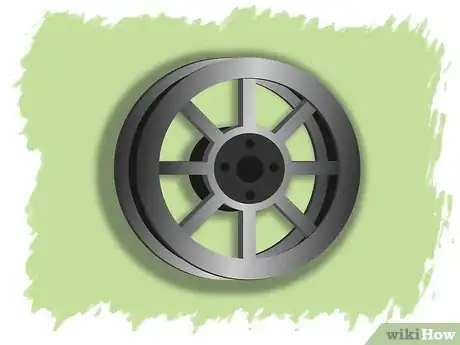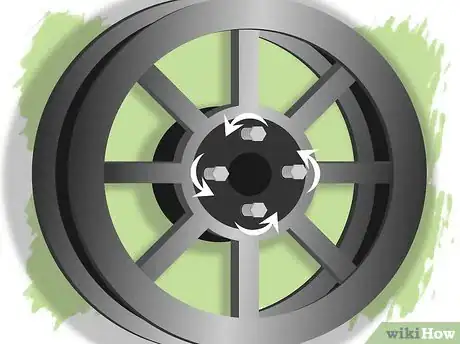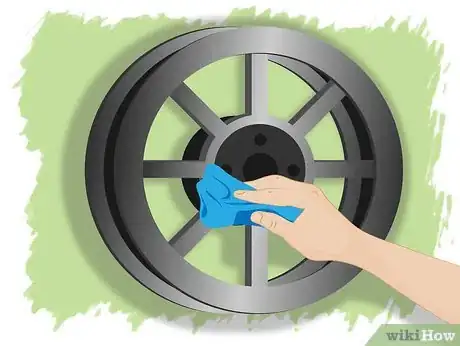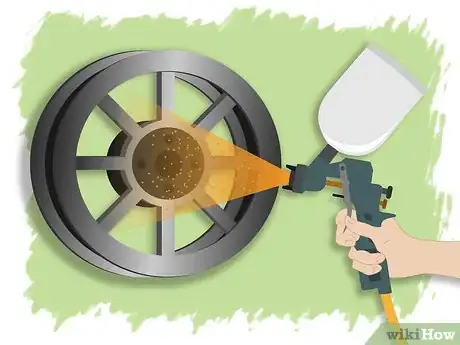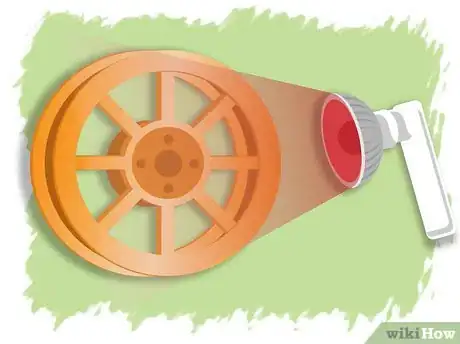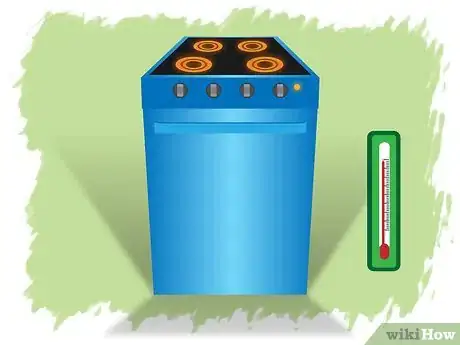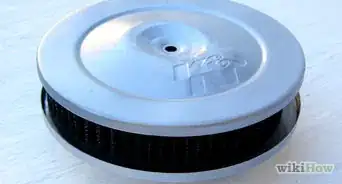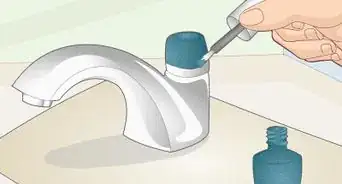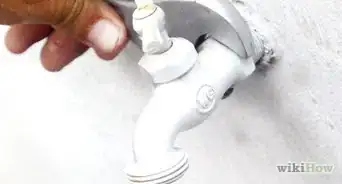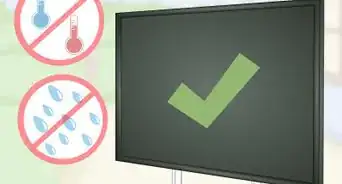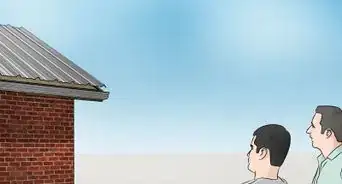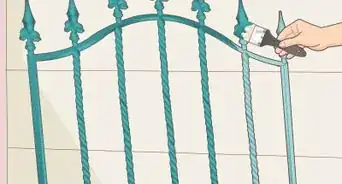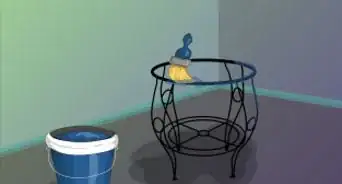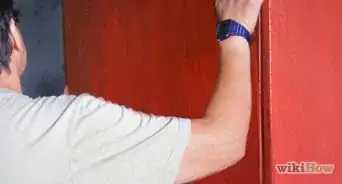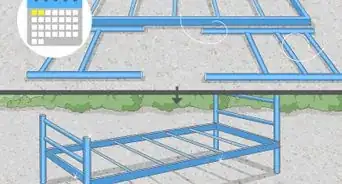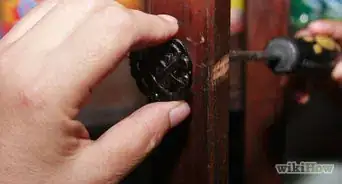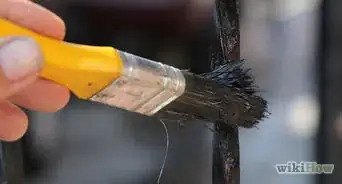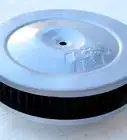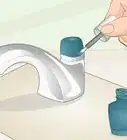wikiHow is a “wiki,” similar to Wikipedia, which means that many of our articles are co-written by multiple authors. To create this article, 28 people, some anonymous, worked to edit and improve it over time.
There are 8 references cited in this article, which can be found at the bottom of the page.
wikiHow marks an article as reader-approved once it receives enough positive feedback. This article received 17 testimonials and 99% of readers who voted found it helpful, earning it our reader-approved status.
This article has been viewed 721,385 times.
Learn more...
Powder coating is a process of coating metal with a plastic finish applied in powder form and baked to a fluid state to bond it to the metal surface. Powder coating has many advantages over traditional liquid coating: It's better for the environment, applies thicker without running, and is easy to style with. Although certain aspects of powder coating can be tricky, it's certainly not difficult, especially for an enterprising soul. Proper cleaning and tools can be the difference between an amateur and a good powder coating job.
Steps
Applying the Powder Coat
-
1Determine the type of material you are going to powdercoat and then select a suitable powder for the finish. Powdercoating is done with thermoplastic or thermoset polymer powder, and these materials are formulated for bonding with different base metals to give the best results.[1]
- See the next section for a detailed discussion of the differences between thermoset and thermoplastic coats. What's good for a car may not be good for a small trinket or decoration.
-
2Disassemble all threaded or lubricated interfaces before you begin, including anything you don't want coated. It sounds simple, but many people forget this step. The powder coat you apply will adhere to everything (if properly done) on your rig, making sealed surfaces, bearings, clamps, bolts and nuts, etc. useless after blasting.[2]Advertisement
-
3Clean the base metal thoroughly.[3] Using bead or abrasive blasting on hard metal, such as cast iron or steel, will remove mill and rust scale, dirt and foreign materials. Chemical solvent cleaning will remove any grease, oil, or paint, and light sanding can be done to finish preparing the surface. Aluminum, magnesium, and other soft alloy metals can be solvent cleaned and wire brushed, or sanded if needed.
- For example, you might sand-blast whatever you want to powder coat until it's down to bare metal. This is the first step in the process. If you don't have access to a sandblaster, you can also use a wire wheel, bench-grinder, or even sandpaper. Just as long as you get the material down to bare metal.
- The next step is to strip the metal of any remaining grime or gunk. You can achieve this by soaking the item in acetone (if the item is small enough) or by wiping it with an acetone-soaked rag.
-
4Apply the powder to the object to be powder coated. This is done using a "gun" or compressed air sprayer which electrostatically charges the powder material so that it sticks to the grounded base metal object receiving the coating.[4] These guns are available from various suppliers, and cost as little as $100. For experimental purposes, you can apply the powder to a flat metal surface by dusting it directly on, and spreading it to a thin, even layer.
- Make sure you have your electrostatic charge hooked up to whatever part you are coating. The powder you use won't properly adhere unless it's given a charge to hold onto.
- After applying the coat but before curing, be careful not to brush or blow on the powder coat, as this will cause some of the powder to fall off, leaving you with a less precise coat.
-
5Cure the metal at a temperature appropriate for the powder material you use. A conventional oven is suitable for this purpose if the metal is small enough to fit, otherwise, an infrared heat lamp or other flame less heat source needs to be used. Normally, the object is heated to 350° to 375° F (175° to 190° C) for about 10 to 15 minutes, and allowed to cool.[5]
- You can use a conventional oven to powder coat smaller items. Just be sure that you won't be using the oven to cook food after the powder coating. Once you've used an oven to powder coat, it absolutely should not be used for cooking.
Thermosets v. Thermoplastics
-
1Use thermoplastic coatings for items you might eventually remold, and thermoset coatings for items that will remain essentially permanent. The main difference between thermoplastic and thermoset is the reversibility of the coat. Like their name implies, thermoset coatings cannot re-melt after undergoing an irreversible chemical bonding process. Conversely, thermoplastic coatings can remelt because no chemical process takes place.
- Thermostat coatings are ideal for things like electronics and appliances because they need to withstand higher amounts of heat, which might cause thermoplastic coatings to melt.
-
2Choose thermotype based on some of the features of the coat. Thermosets and thermoplastics have different chemical properties, making them ideal for different uses. Knowing some of those properties can help you choose which type to coat with:
- Thermosets are said to reinforce the structural integrity of an item, making them particularly suitable for heavy wear-and-tear. They also supply the item with superior chemical and heat resistance, as mentioned above.[6]
- Thermoplastics offer a mixture of strength and flexibility. They are commonly used for items such as plastic bags and even mechanical parts.
-
3Know the advantages and disadvantages of thermosets. Thermosets are often used to coat appliances because of the heat they can withstand.[7]
- Advantages: beautiful aesthetic look; cheap; added strength and stability; resistant to extreme temperatures.
- Disadvantages: irreversible process means thermoset can't be recycled; more difficult to finish; can't be reshaped.[8]
-
4Know the advantages and disadvantages of thermoplastics. Thermoplastics are used for many items, such as park benches, that require both plasticity and durability.[9]
- Advantages: high lubricity or tack;[10] recyclable; able to remolded and/or reshaped; increased impact resistance.
- Disadvantages: more expensive (usually); can melt off if overheated.
Community Q&A
-
QuestionCan I powder coat inside car body but not outside?
 Community AnswerYes, but it will be difficult. You may find it hard to find a shop that has an oven wide enough to accommodate a car. Additionally, the powder will flow around the edges of a surface to the opposite when sprayed, which would result in heavy overspray outside of the car. This could be blown off, but you will be charged extra.
Community AnswerYes, but it will be difficult. You may find it hard to find a shop that has an oven wide enough to accommodate a car. Additionally, the powder will flow around the edges of a surface to the opposite when sprayed, which would result in heavy overspray outside of the car. This could be blown off, but you will be charged extra. -
QuestionCould you please explain the reason why I should not cook food in the same oven I've used to cure the powder coating?
 Community AnswerThe fumes from powder coating are toxic. They also get reintroduced every time the oven gets turned on. You will need a designated oven for this. It's also dangerous to do this inside of the kitchen due to the fumes it produces while curing.
Community AnswerThe fumes from powder coating are toxic. They also get reintroduced every time the oven gets turned on. You will need a designated oven for this. It's also dangerous to do this inside of the kitchen due to the fumes it produces while curing. -
QuestionHow many times is it recommended to re-use or recycle the powder paint, and what are the pros and cons about mixing powder paints from different providers?
 Community AnswerYou can reuse it as many times as you like. There are no real pros to mixing different brands. The cons are pretty simple. They don't all use the same formula so there are different bake times and temperature ranges and you might not get a consistent mix throughout.
Community AnswerYou can reuse it as many times as you like. There are no real pros to mixing different brands. The cons are pretty simple. They don't all use the same formula so there are different bake times and temperature ranges and you might not get a consistent mix throughout.
Warnings
- Do not bake in a gas oven.⧼thumbs_response⧽
- Baking the coating in an oven used for food preparation oven is not recommended.⧼thumbs_response⧽
- Use a respirator, gloves, and eye protection when abrasive blasting metal to remove scale.⧼thumbs_response⧽
- Do not touch the object when it is removed from the oven after curing until it is thoroughly cooled.⧼thumbs_response⧽
- Do not breathe powder when applying it.⧼thumbs_response⧽
- Do not eat! Possibly fatal.⧼thumbs_response⧽
Things You'll Need
- Powder for coating.
- Metal part or object to be coated.
- High temp masking tape for masking off parts.
- Heat lamp, oven, or other curing source.
- Safety equipment such as gloves, safety glasses, and respirator.
References
- ↑ https://www.polyethylenepowder.com/technology/powder-coating.html
- ↑ http://www.powdercoatguide.com/2014/12/prepping-for-powder-coating-step-by-step.html
- ↑ http://www.powdercoatguide.com/2014/12/prepping-for-powder-coating-step-by-step.html
- ↑ https://garage.eastwood.com/eastwood-chatter/how-to-prep-metal-for-powder-coating/
- ↑ https://www.finishing.com/130/23.shtml
- ↑ https://www.thomasnet.com/articles/chemicals/powder-coatings-thermoset
- ↑ https://www.thomasnet.com/articles/plastics-rubber/thermoset-vs-thermoplastics/
- ↑ https://www.chemistryworld.com/news/new-thermoset-plastics-simple-to-recycle/7372.article
- ↑ https://www.thomasnet.com/articles/plastics-rubber/thermoset-vs-thermoplastics/
About This Article
If you want to powder coat something, remove all of its threaded or lubricated surfaces so they don't get locked in place. Then, use abrasive blasting to clean off any rust, dirt, and foreign materials. Once the harder debris is gone, use a chemical solvent to remove grease or oil and then sand the surface if necessary. Next, use a compressed air sprayer to apply the powder coat and cure it at about 350°F for 10 to 15 minutes. For a guide on when to use thermoplastics or thermosets, read more!
